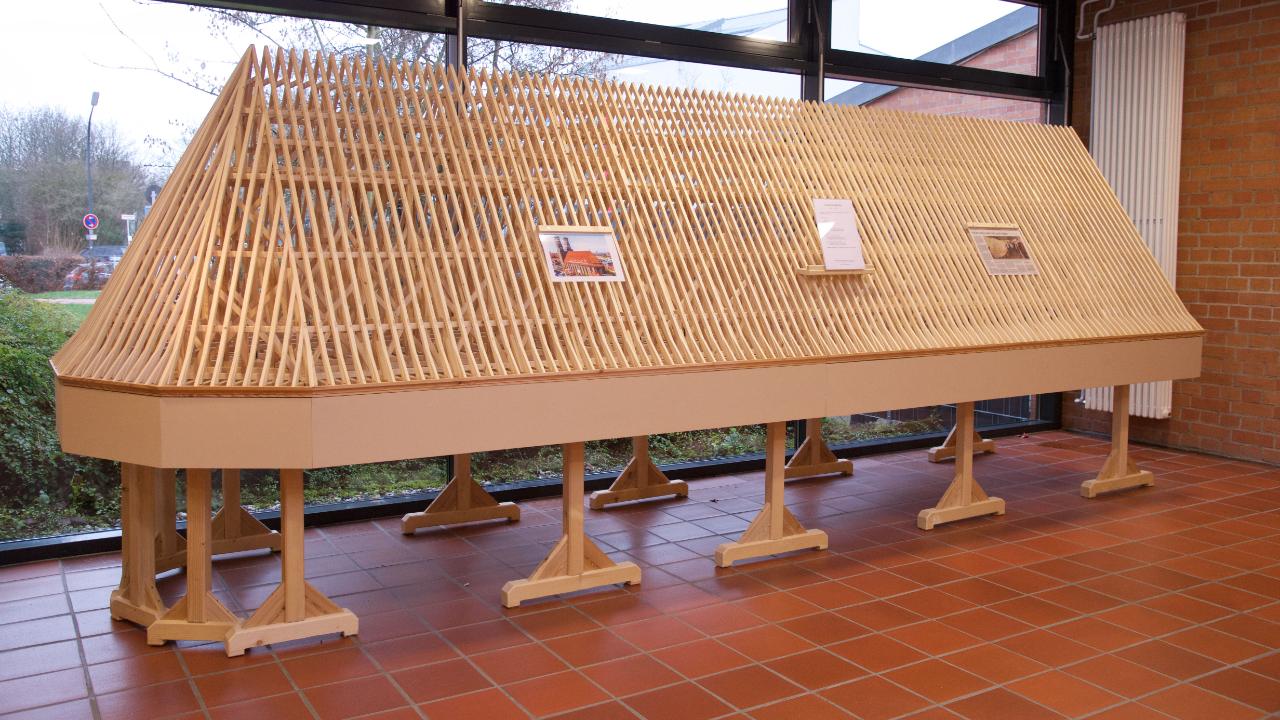The Munich Frauenkirche - Metropolitan Church of Our Lady - was built in place of a three-nave pillar basilica from 1240 in the years 1468 to 1488 by the master builder Jörg von Halsbach (Jörg Ganghofer).
The Archbishop of Munich and Freisingis also the metropolitan of the southern Bavarian ecclesiastical province , which includes the dioceses of Augsburg, Regensburg and Passau as so-called suffragan dioceses.
Together with the Cologne Cathedral, the Frauenkirche is the most important metropolitan cathedral in Central Europe .
Aha! Cool ...
The characteristic tower domes designed as onion roofs, the so-called ' Welsche Hauben ', followed 36 years later in 1525 after the death of master builder Jörg von Halsbach. These are modeled on the Dome of the Rock in Jerusalem .

Frauenturm Munich
At 98.57 meters , the north tower is a few centimeters taller than the south tower, which is 98.45 meters high. This contradicts a widespread rumor of a 1 meter difference due to a construction error.
The nave is 109 meters long, 40 meters wide, 37 meters high and was dimensioned at the time to offer space for all of Munich's residents of around 20,000 people .
Enormous height development and quiet power, transparent pillar position and light-filled structure of the enclosure , all these moments have been brought into the most beautiful interrelationship by Master Jörg and balanced out in the best possible way. Sublimity and calm , seriousness and majesty pervade the entire cathedral.
Roof truss - miracle of "bad wood"
This does not mean the legend of the carpenter Heinrich , who is said to have constructed the roof in the 15th century and then removed a beam . At the time, he gave everyone a riddle as to where the beam belonged...
The Frauenkirche was badly damaged in World War II . Today's roof truss is a post-war work by master builder Theodor Brannekämper. And he created such a filigree and stable construction with bad wood that structural engineers are amazed to this day .
"Miniature roof trusses" on a scale of 1:10 or 1:20
It is about a master carpenter from the Upper Palatinate , Josef Hauer, who enjoys pursuing his hobby as a pensioner - he builds miniature roof trusses on a scale of 1:10 or 1:20. His favorite project: the historic roof truss of the Munich Frauenkirche from 1488. For this alone he sawed, sanded and assembled 3000 individual parts with wooden nails.
The demonstration model, 5 meters long and 1.7 meters wide , is on display in the Chamber of Crafts in Weiden . Apprentices and other interested visitors can see with their own eyes how the old craft works . Fascinating!

Historic roof truss of the Frauenkirche in Munich Photo: Christian Rudnik
Sophisticated acoustics
The Frauenkirche is the largest hall church in the world . The cathedral music is a treat for the ears . The large main organ is one of four organs in the cathedral that came from the workshop of Georg Jann (Alkofen near Regensburg). Just one example: if the lowest note of the organ is played, it sounds like an earthquake with a fan - it takes eleven seconds for the organ note to die away. After all, the associated whistle is 9.60 meters long.
Unbelievable - the "Devil's Kick"

Devil's step in the Frauenkirche
Below the church chancel on the right side, carved in stone, is the imprint of a human foot .
It is the so-called "devil's kick" .
If you put your foot in and look towards the high altar, you won't see any side windows .
According to the legend, when the church was finished but not yet consecrated , the devil crept through the big gate, looking curiously and fiercely at the building, but suddenly laughed out loud and said - a building without windows would not be of much use. He was standing on the spot where the black footprint is now, so he didn't see a window.
However, when he went one step further , all of a sudden there were a lot of windows. Now that he saw that he was the one who had been cheated, he turned into a violent gale and thought he could throw the building together . But he couldn't, and since then one or two of his companions have been storming around the towers.
So it happens that under the women's towers such a strong wind usually blows that it blows some people down the Frauenbergl before they know it or takes their hats off their heads ...
Another version, rarely told, says that in 1468 the well-known strong Duke Christoph von Bayern stayed in Grünwald Castle . When he received the news that his brother Sigmund wanted to build a large cathedral for the Mother of God, he happily exclaimed: "He's right, brother, but he won't see his way out with the money. "
And in joyful affirmation he struck a ashlar with his right foot in such a way that the faint trace of the whole heel could be seen; this track was later dug even deeper and the stone was set at the place in the Frauenkirche , where it is still today...
The wood of the Frauenkirche becomes music
Searching for tonewood for new violins after the war, tonewood dealer and violin maker Franz Fuchs struck gold in the ruins of the Frauenkirche . The tonewood dealer from the Czech town of Schönbach near Eger had settled near Garmisch after being taken prisoner of war. In 1947 Fuchs brought the cheap ruin wood from the city . Fuchs invented the trademark "Domholz" and wanted to have high-quality violins made from it.
Peter Erben, master violin maker, has his workshop in Maxvorstadt and makes violins from "Domholz" among other things. So the wood has a special history. For 400 years it absorbed the vibrations of bells and church music . An analysis by the Otto-Friedrich University in Bamberg recently confirmed, using dendrochronological dating , that the beams are as old as Fuchs assumed.
With such wood age determinations, the scientist can determine when a tree grew and narrow down the elevation . The spruce once grew 800 meters above sea level - that's how high Kirchbichl near Bad Tölz is. From there the beams were floated to Munich in 1468 and installed.
How much the centuries-old wood means for the sound of a new instrument cannot be determined in concrete terms. When a musician reaches his limits with his previous instrument , he will start looking for a better one. Playing a violin, viola, or cello from a renowned luthier can provide greater playing pleasure and increased listening pleasure .
Married couple party - 33 201 years of love gathered in the Liebfrauendom!
On October 27, 2019, Cardinal Reinhard Marx blessed more than 750 married couples .
- The longest -married couple celebrated the Crown Jewels wedding at 75 years of marriage.
- Seven couples could look back on 65 years of marriage .
- 100 couples on 60 years together and ...
- 300 couples celebrated their golden wedding anniversary after 50 years .
"I don't know - I'm not married, as you know - if a husband says 'I love you' to his wife every day. Probably not . But there are days when it should actually happen. Today is such a day! ” said Cardinal Marx.
What is there to see?
Das Kenotaph im "Kaiser Ludwig Mausoleum"

Emperor Ludwig Mausoleum in Frauenkirche, Source: Frauenkirche, Ludwig Rosenberger, 1947
The cenotaph for Emperor Ludwig the Bavarian , who died in 1347, is set up in the rear southern part. The bronze figures of the magnificent case show Duke Wilhelm IV on the west side and Albrecht V on the east side. The four kneeling standard-bearers were intended for a memorial to Duke Wilhelm V in St. Michael's Church, which was never erected.
The cenotaph originally stood in a central position , in the chancel of the Frauenkirche and was moved several times. It is intended to indicate that the Wittelsbachs were worthy of being emperors and their deeds for the Catholic faith .
To commemorate the death of Emperor Ludwig of Bavaria : He rode near Puch near the monastery of Fürstenfeld to hunt. There he apparently suffered a heart attack , which caused him to fall from his horse. The Emperor died in the arms of a peasant .
While his heart was buried in his father's coffin , Ludwig's body was taken to Munich . Actually, he should have been denied a church burial, because in the dispute over the throne between Habsburg and Wittelsbach , Pope John XXII. Ludwig's imperial dignity was not recognized and he was excommunicated from the church .
Nevertheless, the pugnacious Wittelsbacher found his supposed final resting place in a magnificent ceremony in the choir of the Marienkirche , the most important Munich parish church next to his wife Beatrix von Glogau until the church was demolished in 1468 . In its place was the Church of Our Lady, today's cathedral , built as a monumental mausoleum for the emperor . His high grave in the chancel forms the center of the church.
However, it is a cenotaph, an empty tomb . Where the bones of Ludwig of Bavaria, who has not been released from the ban to this day , remained after all his translations, is not known to date.
Frauenkirche
Women's Square 12
80331 Munich
